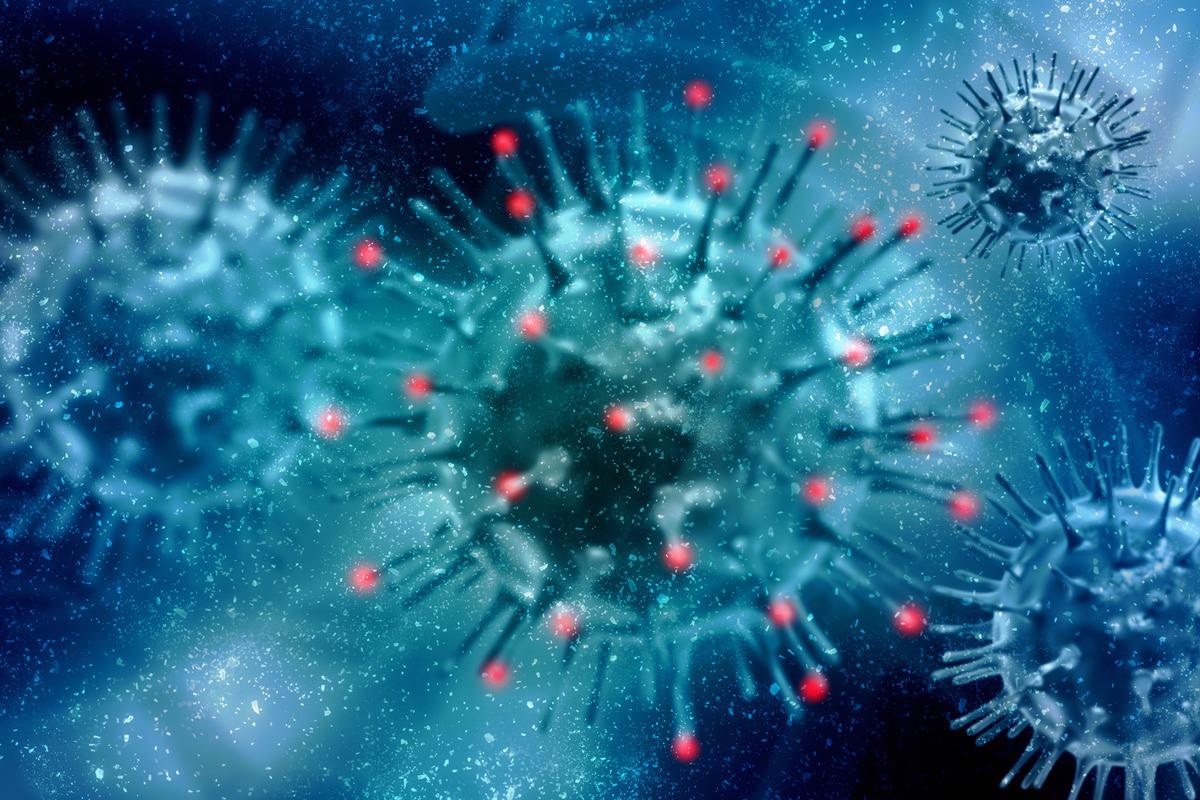In a recent study posted to the bioRxiv* preprint server, researchers demonstrated that the thiopurines block coronaviruses (CoVs) spike (S) protein assembly and integration into progeny virions.

Background
CoVs are enveloped viruses containing positive-sense and single-stranded ribonucleic acid (ssRNA) genomes. The human CoVs (HCoVs) such as HCoV-229E and HCoV-NL63 belong to the α-CoVs genera. In addition, severe acute respiratory syndrome CoV 2 (SARS-CoV-2), SARS-CoV, Middle Eastern respiratory syndrome CoV (MERS-CoV), HCoV-HKU1, and HCoV-OC43 come under the β-CoVs genera.
The emergence of MERS-CoV and SARS-CoV from animal hosts and the ongoing SARS-CoV-2-driven coronavirus disease 2019 (COVID-19) pandemic have fueled research and development of efficient antivirals. Drug repurposing approaches have aided these efforts by identifying antivirals among medications previously licensed for human use. However, antiviral medicines with a broad spectrum of action are desperately needed to address the emerging viral infections.
Thiopurines were used as immunomodulators and in treating cancer and inflammatory disorders for more than 50 years. The authors of the current study had earlier reported that 6-thioguanosine (6-TGo) and 6-thioguanine (6-TG) hindered the multiplication of influenza A virus (IAV) selectively. This inhibition was via stimulating the unfolded protein response (UPR) and hampering the assembly and processing of viral glycoproteins. Nevertheless, if 6-TG and similar thiopurines hinder CoV glycoprotein is unknown.
About the study
In the present study, the researchers investigated whether 6-TG and such thiopurines hamper the CoV glycoprotein. The authors hypothesized that 6-TG inhibits SARS-CoV-2, SARS-CoV, and MERS-CoV's papain-like cysteine proteases (PLpro) in vitro. Complementary cell culture infection and ectopic expression models were employed for the evaluations.
The cell lines employed in the study include African green monkey kidney and human hepatoma Huh-7.5 Vero cells, human embryonic kidney (HEK) 293A and 293T cells, baby hamster kidney (BHK-21), and lung adenocarcinoma Calu-3 cells. In addition, the SARS-CoV-2 strains used were SARS-CoV-2/SB3-TYAGNC and SARS-CoV-2/Canada/ON/VIDO-01/2020. The effects of thiopurines (6-TG, 6-mercaptopurine (6-MP), and 6-TGo) on SARS-CoV-2 were evaluated using Calu-3 lung adenocarcinoma cells. Furthermore, the impact of these three thiopurines on HCoV-OC43 and HCoV-229E was also tested.
Findings
The results show that thiopurines impede the replication of the β-CoVs SARS-CoV-2 and HCoV-OC43, and to a lesser degree, the α-CoV HCoV-229E. The variation among the α-CoV and β-CoVs vulnerabilities towards 6-TG might be associated with the inter-viral differences.
The 6-TG interrupted the early phase of CoVs infection, thereby suppressing the production of subgenomic and full-length HCoV RNAs. These RNAs were essential for the replication of the HCoVs and the generation of infectious progeny. The 6-TG-mediated hindrance of HCoV-OC43 infection reduces inositol-requiring enzyme 1 (IRE1) activation and X-Box Binding Protein 1 (XBP1) target gene accumulation.
Although 6-TG disrupts the production of viral full-length genomic and subgenomic RNAs, host protein expression remains unaffected. Furthermore, 6-TG decreased the assembly of S glycoproteins in a variety of HCoVs, which was similar to the authors' recent findings on the impacts of thiopurines on IAV glycoproteins.
The addition of 6-TG reduced the concentration of S proteins and enhanced their electrophoretic mobility to resemble the characteristics of S after the enzymatic elimination of N-linked oligosaccharides using the peptide, N-glycosidase F (PNGaseF). While 6-TG treatment impedes the usual S trafficking to the cell surface, they would not inhibit the broad secretion of Ss.
The SARS-CoV-2 virus-like particles (VLPs) procured from cells treated with 6-TG demonstrated a deficiency of S protein. SARS-CoV-2 S-pseudotyped lentiviruses had a similar impact following 6-TG treatment. The lentiviruses collected from cell supernatants lacked S and were incapable of infecting the human cells expressing angiotensin-converting enzyme 2 (ACE2) receptors.
In low micromolar concentrations, the 6-TG's established way of action is selective inactivation of the small guanosine triphosphatase (GTPase) Ras-related C3 botulinum toxin substrate 1 (Rac1). However, the 6-TG inhibition of the small GTPases Ras homolog family member A (RhoA), cell division control protein 42 homolog (CDC42), and Rac1 (43, 44, and 37) had no impact on the S aggregation and processing.
Additionally, ML099, an extensive GTPase agonist, was able to combat the outcomes of 6-TG. These inferences implied that an unidentified GTPase might be the pertinent target protein of 6-TG involved in controlling S processing and assembly.
Conclusions
The findings suggest that the 6-TG therapy causes impaired S processing and trafficking in CoVs. The treatment with a pan-GTPase agonist surpasses the outcomes of treatment with 6-TG. The study highlights the potential role of GTPase inhibitors as host-directed antivirals.
Overall, the current work sheds light on the modes of action of a potent antiviral, 6-TG, that can broadly target HCoVs. The study implies that small GTPases might be potential targets for antivirals and also presents the effect of glycoprotein maturation on the biology of CoVs.
*Important notice
bioRxiv publishes preliminary scientific reports that are not peer-reviewed and, therefore, should not be regarded as conclusive, guide clinical practice/health-related behavior, or treated as established information.
-
Pringle, E. et al. (2022) "Thiopurines inhibit coronavirus Spike protein processing and incorporation into progeny virions". bioRxiv. doi: 10.1101/2022.03.10.483772. https://www.biorxiv.org/content/10.1101/2022.03.10.483772v1
Posted in: Medical Science News | Medical Research News | Disease/Infection News
Tags: ACE2, Adenocarcinoma, Angiotensin, Angiotensin-Converting Enzyme 2, Baby, Cancer, Cell, Cell Culture, Cell Division, Coronavirus, Coronavirus Disease COVID-19, covid-19, Cysteine, Drug Repurposing, Enzyme, Gene, Genomic, Glycoprotein, in vitro, Influenza, Inositol, Kidney, MERS-CoV, Pandemic, Protein, Protein Expression, Research, Respiratory, Ribonucleic Acid, SARS, SARS-CoV-2, Severe Acute Respiratory, Severe Acute Respiratory Syndrome, Spike Protein, Syndrome, Toxin, Virus

Written by
Shanet Susan Alex
Shanet Susan Alex, a medical writer, based in Kerala, India, is a Doctor of Pharmacy graduate from Kerala University of Health Sciences. Her academic background is in clinical pharmacy and research, and she is passionate about medical writing. Shanet has published papers in the International Journal of Medical Science and Current Research (IJMSCR), the International Journal of Pharmacy (IJP), and the International Journal of Medical Science and Applied Research (IJMSAR). Apart from work, she enjoys listening to music and watching movies.
Source: Read Full Article
